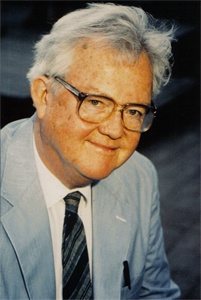11/29/07
I announced in the previous blog that we planned to put more CLP (Cahill Lectures and Papers) texts on my website as PDFs (please see that blog for instructions on how to open these.) Now I have chosen thirteen more to be made accessible in this way; they are either openable now or soon will be. Again, I will list them, stating briefly why I believe they may be of interest to students, colleagues, and general readers:
· CLP 7, 1983, "The Status of Writing in Asia." Discussant paper for
College Art Assn. session on this theme. Some comments on individual papers, but also some large observations—one of my thoughtful essays.
· CLP 22, 1995. "Exploring the Zhi Garden in Zhang Hong's Album."
Lecture given at LACMA. Same general content as my published essay (see my Bibliography for 1995) which is accompanied by color reproductions of the leaves; but since that is now rare (out of print) this lecture may be useful as easier to access.
· CLP 27, 1997. "The Japaneseness of Japanese Nanga Painting."
Another assault on this large problem; lecture given on the occasion of an exhibition at the Seattle Art Museum.
· CLP 32, 1999. "Something Borrowed, Something New: Cross-
cultural Transmission and Innovation in East Asian Painting." One more on this large theme (cf. CLP 156 below), lecture given at Japan House, New York.
· CLP 64, 1976. "Life Patterns and Stylistic Directions: T'ang Yin and
Wen Cheng-ming as Types." Deliberately provocative paper given at Wen C-m symposium at U. Michigan. Original reading copy. Important for me. a turning point in my career.
· CLP 64 (1983). "Confucian Aspects of Edo-period Art." Lecture
given at LACMA on occasion of exhibition from Tokugawa Art Museum glorifying Tokugawa rule in the Edo period; another deliberately provocative lecture, arguing contrarily for its oppressiveness.
· CLP 76, 1991. Letter to Judith Smith, giving my discussant's
remarks at great Dong Qichang symposiuim in Kansas City, in which, taking up Jerome Silbergeld's suggestion of "Tung Ch'i-ch'ang, the Theme-park": I named some of the attractions the theme-park might contain.
· CLP 88 (1984). "On the Album of Scenes of Huangshan Attributed
to Hongren." English text for paper given on opening night of symposium in Hefei (read in Chinese by Lin Xiaoping); deliberate shocker, arguing with slides that the album is really by Xiao Yuncong. Intended to make important point: we foreign scholars can do re-attributions too. Published in Chinese (see my Biblio. for 1985), never in English.
· CLP 109 (1992). "Tung Ch'i-ch'ang." Lecture given at Met. Museum
of Art, NY, some months after Kansas City symposium, when exhibition was there; arguing further some of the issues that had surfaced in the symposium.
· CLP 119 (1999). "Cultural Values in East Asian Art." Prepared
comments for panel discussion at Japan Society, NY, on "The Concept of Masterpieces." (Others on panel were Nobuo Tsuji, Robert Rosenbloom, Hans Belting.)
· CLP 151A (1972). "The Problem of Value in Nanga Painting."
Lecture delivered at Asia House Gallery on occasion of my Nanga exhibition there. Attached is list of original selection for exhibition--which was much altered, and watered down, after near-collapse of exhibition—a sad story, which I have now told in one of my "Responses and Reminiscences" (#50, see below) soon to be added to those on my website.
· CLP 156 (2001). "China's Relations with Korea and Japan in Art."
Keynote paper for symposium "Influence, Confluence, ..." organized by NYU in New York. Still another attempt to grapple with this large problem.
That's all for now, and I have no immediate plan for adding more in the near future. I have, however, written four more for the "Responses and Reminiscences" series, which will be added soon:
48. "Aschwin Lippe," remembering a scholar who was also a real prince;
49. "Music in Korea," a narrative of my engagement in music circles in Korea while I was in the occupation there, 1946-48;
50. "My Partly-Botched Nanga Exhibition," a new and revelatory account of how this exhibition almost didn't happen, and ended up quite different from the one I had envisioned; and
51. "Two Admonitory Notes on Chinese Painting Texts," cautionary writings about two of the many traps that Chinese writings set for those who use them.
Previous blogs have contained advice and admonitions to young art historians, intended (shamelessly) to offer a voice of reason and good sense, however retardataire. Messages from students sent through the "Contact" channel on my website indicate that some have appreciated these. Let me add one more here. I have sometimes quoted from a piece of writing by Michael Baxandall without giving the source of it. Recently I ran on my old offprint of this article and reread it, and am inspired to say: whatever direction you mean to follow as an art historian, read this before committing yourself to any one while dismissing others. It is: Michael Baxandall, "The Language of Art History." In: New Literary History: A Journal of Theory and Interpretation, Vol. X, 1978-79, pp. 453-465. Brief, clear, jargon-free; read and reread, both for content and as a model for one kind (rather conversational) of good writing.
